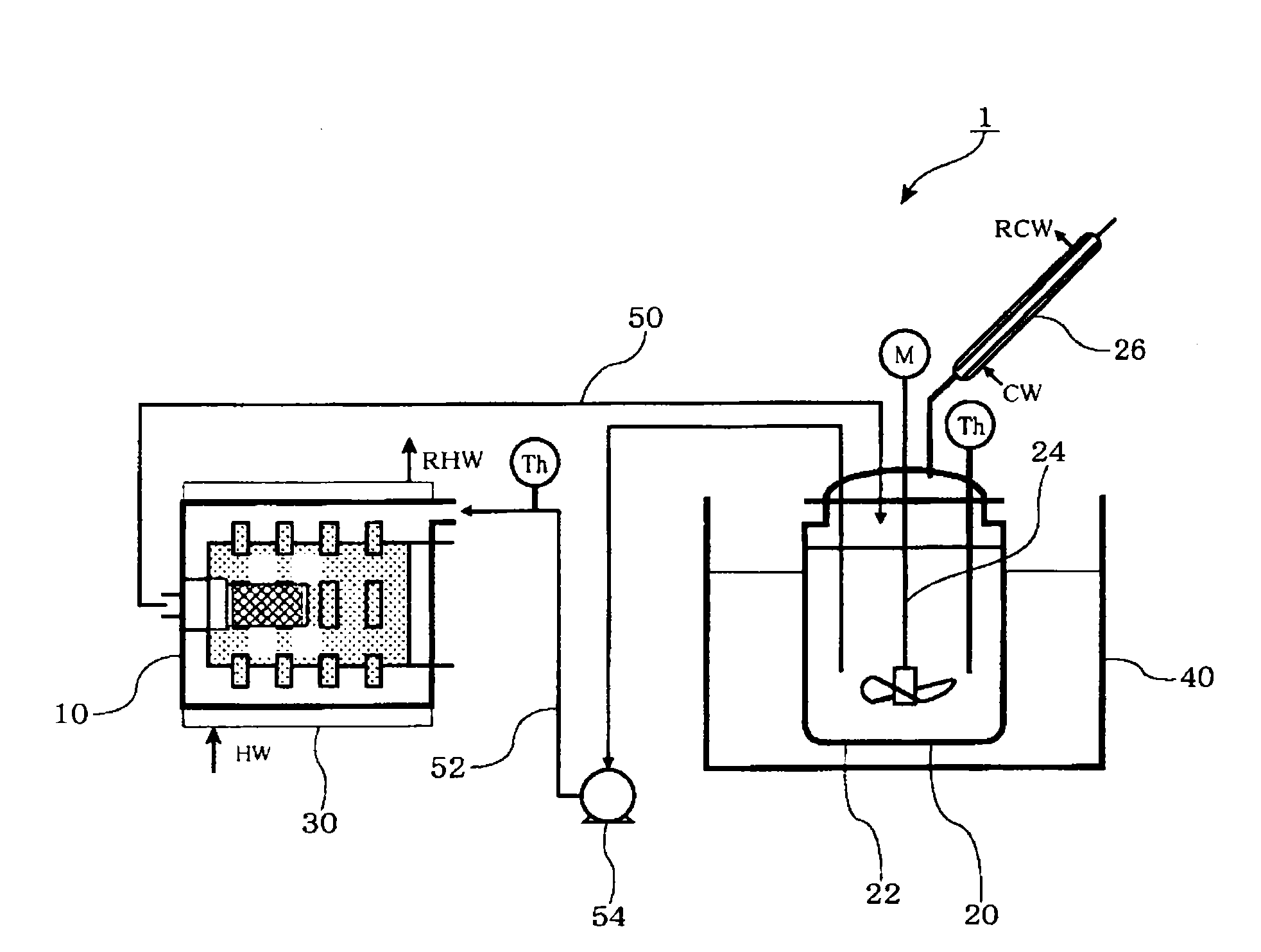Method for producing ion-conductive substance, ion-conductive substance, crystallized ion-conductive substance, and cell
a technology of ion-conductive substances and ion-conductive substances, which is applied in the direction of non-aqueous electrolyte cells, non-metal conductors, cell components, etc., can solve the problems the ion-conductive conductance of organic electrolytes at room temperature is mostly limited to organic electrolytes, and the concern of liquid leakage or ignition, etc., to achieve high yield and high working efficiency
- Summary
- Abstract
- Description
- Claims
- Application Information
AI Technical Summary
Benefits of technology
Problems solved by technology
Method used
Image
Examples
production example 1
Production of Lithium Sulfide (Li2S)
[0166]In a nitrogen atmosphere, 270 g of toluene as a non-polar solvent was added to a 600 ml-separable flask. Then, 30 g of lithium hydroxide (manufactured by Honjo Chemical Corporation) was incorporated. While stirring at 300 rpm by means of a Fullzone stirring blade, the mixture was retained at 95° C. The temperature was elevated to 104° C. while blowing hydrogen sulfide into a slurry at a supplying speed of 300 ml / min. From the separable flask, an azeotropic gas of water and toluene was continuously discharged. The azeotropic gas was condensed by a condenser outside the system to allow it to be dehydrated. During this time, toluene in an amount that is equal to that of toluene distilled are continuously supplied, whereby the level of the reaction liquid was kept constant.
[0167]The amount of water in the condensed liquid was gradually decreased. After the lapse of 6 hours from the introduction of hydrogen sulfide, distillation of water was no l...
production example 2
Finely Pulverization Treatment
[0170]26 g of lithium sulfide obtained in Production Example 1 was weighed in a Schlenk cocked-bottle in a glove box. In a nitrogen atmosphere, 500 ml of dehydrated toluene (manufactured by Wako Pure Chemical Industries, Ltd.) and 250 ml of dehydrated ethanol (manufactured by Wako Pure Chemical Industries, Ltd.) were added in this sequence, and the resultant was stirred by means of a stirrer at room temperature for 24 hours. After the modification treatment, the bath temperature was raised to 120° C., and a hydrogen sulfide gas was circulated at a rate of 200 ml / min for 90 minutes to conduct a treatment. After the hydrogen sulfide gas treatment, the solvent was removed by distillation in the atmosphere of nitrogen at room temperature. Further, in the vacuum, drying was conducted for 2 hours to collect finely pulverized lithium sulfide.
[0171]The finely pulverized lithium sulfide was evaluated in the same manner as in Production Example 1. The lithium sul...
example 1
[0173]The lithium sulfide (LiS2) produced in Production Example 1 was pulverized by means of a jet mill (manufactured by Aishin Nano Technologies Co., Ltd.) to allow it to have an average particle size of 0.3 μm. 1.0 g (64 mol %) of the lithium sulfide, 1.61 g (21 mol %) of phosphorus pentasulfide (P2S5) (manufactured by Sigma-Aldrich Japan K.K.) and 0.42 g (15 mol %) of lithium bromide (LiBr) (manufactured by Sigma-Aldrich Japan K.K.) were put in a nitrogen-substituted flask provided with a stirrer. Then, 50 ml of xylene which had a water content of 10 ppm (manufactured by Wako Pure Chemical Industries, Ltd.) was added, and they were allowed to contact with each other at 140° C. for 24 hours.
[0174]The solid components were removed by filtration, vacuum-dried at 120° C. for 40 minutes, whereby an ionic conductive substance (solid electrolyte) was obtained. The recovery rate of the solid electrolyte was 95%. Nothing was adhered to the flask or the stirrer.
[0175]The ionic conductivity...
PUM
 Login to View More
Login to View More Abstract
Description
Claims
Application Information
 Login to View More
Login to View More - R&D
- Intellectual Property
- Life Sciences
- Materials
- Tech Scout
- Unparalleled Data Quality
- Higher Quality Content
- 60% Fewer Hallucinations
Browse by: Latest US Patents, China's latest patents, Technical Efficacy Thesaurus, Application Domain, Technology Topic, Popular Technical Reports.
© 2025 PatSnap. All rights reserved.Legal|Privacy policy|Modern Slavery Act Transparency Statement|Sitemap|About US| Contact US: help@patsnap.com


